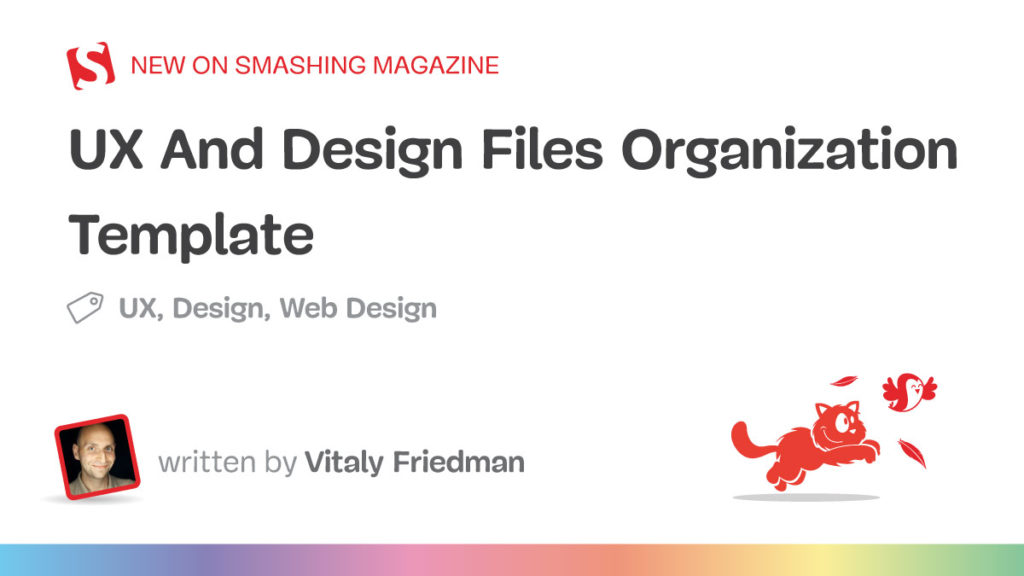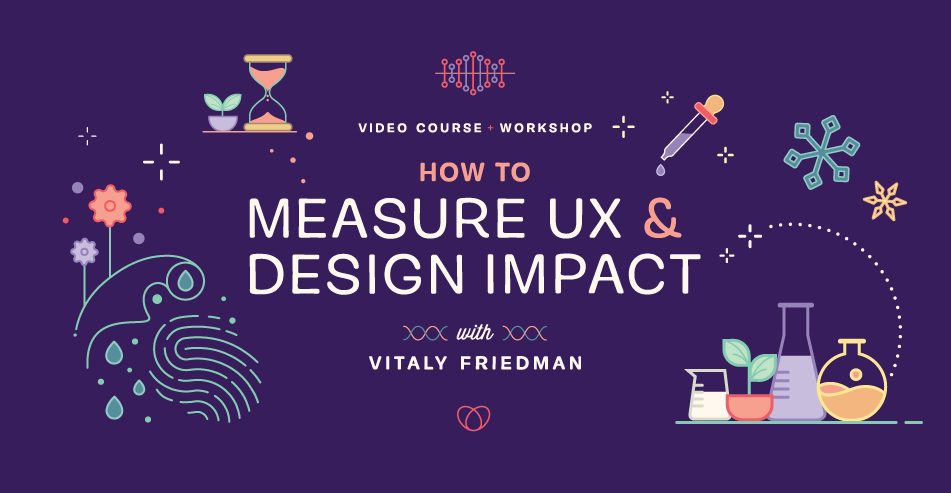Are you also getting lost in all the files, deliverables, shared docs, PDFs, and reports related to your UX work? What about decisions scattered everywhere between email, Slack conversations, Dropbox folders, SharePoint, Notion, and Figma?
It’s too easy to lose important assets and too difficult to find them just when you need them. While we often speak about how to neatly organize Figma files, we rarely discuss a sensible folder structure for all our UX assets. Well, let’s change that.
(If you’re looking for more insights into design patterns or measuring UX, take a look at Smart Interface Design Patterns and How To Measure UX, friendly video courses on design patterns and UX, with a live UX training coming up in a few weeks.)

Organization Starter Kit (Free Template)
A while back, I stumbled upon a neat organizational starter kit by Courtney Pester. It’s an incredibly thorough setup template to get started with and build upon. Surely your projects will require a customized setup, but it will get you running fairly quickly.
In the article, Courtney suggests breaking down all assets and resources into 7 main categories — all representing distinct parts of the project lifecycle, and neatly broken down into sub-folders:
- Client resources,
- Research & synthesis,
- Concept ideation & testing,
- Wireframes & prototypes,
- Meeting artifacts,
- Final deliverables,
- UI + Dev handoffs.

Every project starts by duplicating the same main folder template and adjusting it for the needs of the project. Most importantly, we choose a central place where all key assets have to be located — be it Notion, Google Drive, Dropbox, or anything else. If an important detail lands in your email or is sent to you via Slack, it has to end up in that shared space.
I really can’t emphasize enough the importance of having a shared understanding about where the files will be stored and how they will be accessed. Proper organization of assets will not happen automatically — usually, it requires effort and commitment from the entire team to ensure that it doesn’t become a place with some bits and pieces, while other critical details and decisions are scattered all over other channels.
Now, when we bring all documents and artefacts together, we end up with a quite lengthy but also comprehensive folder structure:

It might appear quite daunting at first, but of course, the overall structure would change quite significantly depending on what exactly you are working on.
Beware Of Duplications
Probably the most underrated problem in any type of file structure organization is duplication and versioning. Before we start the project, we need to be very clear about what types of files should end up in the shared drive and which shouldn’t. You might or might not need intermediate versions of some documents, but you definitely want to keep the final ones.
These are typically the questions I would be raising:
- Do we need to restrict access to some sections of the folder (e.g., sensitive data)?
- What naming conventions do we use for files/folders (e.g,. semantic versioning, V1, V2, –FINAL)
- How do we manage deprecated or outdated files? Do we archive or delete them?
- What would be the main communication channel for stakeholders/clients?
- Are there any legal requirements for storing and sharing some specific files?
- What will happen to the shared space once the project has finished?
Frankly, the reason why I raise these questions isn’t only to make decisions and create some shared conventions in the team. A much more important goal is to strengthen communication channels and raise awareness. We want to establish a shared commitment and ownership over that space — mostly to avoid any key decisions falling through the cracks, resulting in severe delays, costs, or cutting corners.
Secure But Easy To Access
It might sound obvious, but worth emphasizing: if the shared space is difficult to use, it will not be used. That’s when people will find workarounds to store some of “their” assets in spaces that are more convenient to use — with pieces of information scattered all over different channels.
The shared space has to be easily accessible for everyone who should be able to access and maintain it. We most certainly want to stay secure, but setting up a multi-layered authentication process with Yubikey and a virtual machine is unnecessary.
For most situations, a password/passkey + 2FA (2-Factor-Authentication) would be perfectly enough.
The Drawbacks Of The Tree Structure
Personally, I do have a small issue with the tree structure. Although it neatly organizes all artefacts in folders, it doesn’t really reflect the project timeline. But different assets are more important at different times of a project lifecycle. And: there are typically dependencies between different parts of a project, so it might also be a good idea to break down by time or at least tag by milestones.
For example, we might want to look up research insights related to a specific part of the project. Or review the video from usability sessions when a specific iteration was tested. Doing so with a high-level tree structure can be a bit challenging and time-consuming.
When organizing artefacts, I try to follow one single principle: put things that belong together close to each other. Typically, it means having a high-level structure with key iterations, broken down by milestones. It can live in Notion or in Miro, with each milestone linked to a Figma mock-up (not uploaded .fig files!).

Useful Tools To Organize UX Work
There are plenty of wonderful tools to help you organize and share your UX work as well:
- Dovetail to gather customer insights in one place,
- UserInterviews for recruiting and research work,
- Maze is another great UX research platform,
- Glean.ly to use as an atomic research repository,
- Notion and AirTable for quick look-ups of all files.
And: don’t feel compelled to replicate any file structure entirely. Use it as a foundation to be inspired by and build upon. Customize away for the specific needs of your projects and your team. What works for you works for you. There is really no perfect and universal way that works out of the box.
How do you organize your files and assets? What folder structures and organization systems do you use? Share what works best for you and your team in the comments below.
Happy organizing, everyone!
Useful Resources
- How To Organize Figma Files by Lee Munroe
- How To Build A User Research Database (Notion Template) by Odette Jansen
- How To Build Up UX Research From Scratch (+ Templates) by Ori Dar
- Starter Kits For Design Leads
- Useful Notion Templates
- Useful Miro Templates
- Useful Figjam Templates
New: How To Measure UX And Design Impact
Meet Measure UX & Design Impact (8h), a new practical guide for designers and UX leads to measure, track, show and report the impact of your incredible UX work on business. Use the code IMPACT 🎟 to save 20% off today. Jump to the details.
Video + UX Training
$ 495.00 $ 799.00
Get Video + UX Training
25 video lessons (8h) + Live UX Training.
100 days money-back-guarantee.
Video only
25 video lessons (8h). Updated yearly.
Also available as a UX Bundle with 2 video courses.
Source: Read MoreÂ



